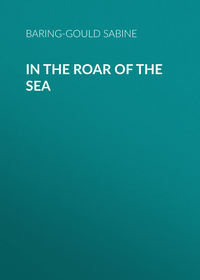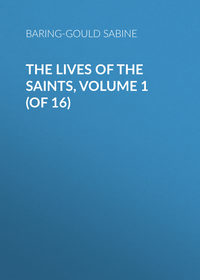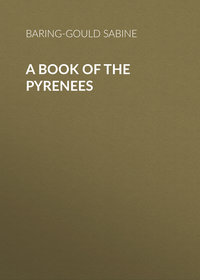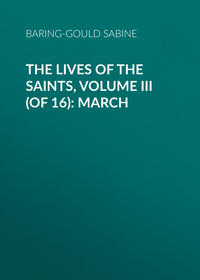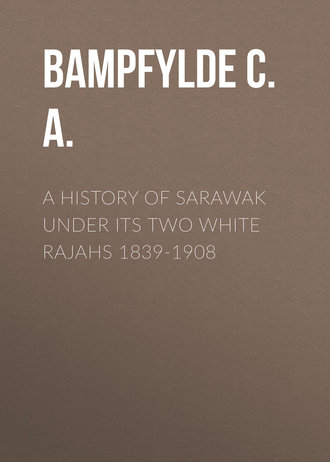 полная версия
полная версияA History of Sarawak under Its Two White Rajahs 1839-1908
The Ulu Ai Dayaks have always been the most troublesome, and, as we have pointed out, are now the sole offenders. Not only are these people at enmity with the alien tribes above them, and those inhabiting the head-waters of the Mahkam (Koti), the Batang Kayan (Belungan), and the Kapuas, but also with the Dayaks living below them. Yet they have their redeeming points, especially those of the upper Rejang, who are a hard-working people. Many thousands of dollars worth of gutta-percha, india-rubber, and rattans annually pass from their hands to the Chinese traders, and the bulk of the jungle produce exported comes from the Rejang. The money so earned by them is not always converted into useless old jars and brassware, the usual outward signs of richness amongst Dayaks, but is placed with the Chinese on interest, and upon good security; and in such transactions the Dayaks are safeguarded by a Government regulation, which they are careful to see is not evaded.
After several years of tranquillity, in 1897 troubles again arose in the Batang Lupar. An Ulu Ai named Bantin, a man of no rank, collected a few kindred restless and badly disposed Dayaks, and, under the pretence of wrongs, more or less imaginary, done to him and his people in former times, made several petty raids against Dayaks living farther down-river. Trifling as the successes were that he obtained they were sufficient to gain for him renown as a leader, and not only the addition of more followers, but the co-operation of a few chiefs living in his neighbourhood, – turbulent characters who had been subdued before, but who were only waiting for a favourable opportunity to break out again. The people were attacked in March, 1897, and, amongst others, Bantin's eldest son was killed. A few months later he was severely handled again for attacking some Dayaks living below Lobok Antu, and this lesson was apparently sufficient to keep his hands off his neighbours for a few years.
But in March, 1902, he again broke out, and on two occasions attacked inoffensive Dayaks below Lobok Antu, killing four; and this led to perhaps the most tragic event that the annals of Sarawak record.
The Rajah at once organised an expedition with the object of crushing and scattering this nest of rebels. To do this successfully a large force was necessary to block all roads by which the rebels could escape, especially those leading over the border; but, unfortunately, an unprecedented number of Dayaks, some 12,000, turned out at the bidding of their Ruler, far more than were wanted or expected.
Leaving Simanggang Fort on June 9, under the command of Mr. H. F. Deshon, the Resident of the 3rd Division,333 with whom was the Rajah Muda and Mr. D. J. S. Bailey, the Resident of Batang Lupar and Saribas,334 the force reached Nanga Delok on the 12th. Here the boats were to be left, and the bala was to march inland in divisions. With a company of Rangers, a strong and well-equipped body of Malays, and an overwhelming force of Dayaks success seemed assured; but a foe more dreadful than any human enemy attacked the camp, and in a few hours had claimed many victims. Cholera had broken out, and rapidly spread. Panic-stricken, with their dead335 and dying, the Dayaks at once turned their bangkongs homewards, and by mid-day of the 14th, of 815 boats that had collected at Nanga Delok, but nineteen remained, with the Malay contingent, and the Rangers, who lost eight of their comrades, and their senior non-commissioned officer. Of the small force of Dayaks who had so bravely stood by their leaders, only a hundred, or under one half, were available for service. These, under their plucky leader, the Pengulu Dalam, attempted to effect something, but the rebels had retreated farther than they dared follow, and after burning a few houses in the vicinity they were compelled to retreat to their boats. Then the small remnant of the expedition returned, passing on their way down many empty boats, and other gruesome testimony of the sad havoc caused by the cholera, to which it was subsequently ascertained at least one thousand had fallen victims.
Bantin was soon on the war-path again, harassing the lower Dayaks on a larger scale than before. Mr. Bailey twice attacked him, on the first occasion burning twenty-four villages, and forty on the second, in co-operation with a bala from the Rejang under Pengulu Dalam, when many of the rebels were killed, but these punishments failed to bring Bantin and his band to their senses.
An expedition led by the Rajah in March, 1903, the last one he has led in person, resulted in submission; it, however, proved but hollow, having been made by the rebels to gain time to recover from their losses. In February the following year, during the Rajah's absence in England, the Rajah Muda was compelled to attack these rebels again; and, though this expedition was successful, another had to be despatched against them in June. On this occasion a column led by Mr. J. Baring-Gould336 was attacked by the rebels, who were driven off with a heavy loss. Nearly fifty long-houses were destroyed.
Then a large party of these wild Ulu Ai Dayaks of the Rejang and Batang Lupar settled upon Entimau hill near the head of the Katibas, and there built a strong stockade, but by a frontal attack delivered by the Pengulu Dalam, quickly followed up by an attack from their rear under Pengulu Merum, these rebels were driven out with a heavy loss. They then retired to the head of the Kanowit, where they were again severely handled by the Pengulu Dalam.
It is sometime now since Bantin with many others finally submitted to the Rajah at Kapit Fort; and though the peace that followed lasted for some little time, other outbreaks have occurred, though these have been less frequent and serious.
By establishing outposts and so bringing these warlike people more immediately under Government control it is expected that they will now soon be brought into line with the great majority of the Sea-Dayaks. But, though time and circumstances may alter the nature of these semi-savages, and head-hunting will gradually become less popular, as the danger to those indulging in it is increased, still the savage old Adam will remain dormant in the nature of the Sea-Dayaks for many years to come, and at times must break out, as surely, and for the same reason, as it does in other parts of the world, and amongst far more civilised people; as it will continue to do until the millennium.
There is a bright side to the picture, as there is to every picture, and the dark spot is to be found in one corner only. The total Sea-Dayak population may be computed at a little under 120,000, and of these over 80 per cent are now a peaceable and well-behaved people. Those with any real experience of them can testify to their many and predominating good qualities. Crime is rare amongst them; they are an easy and a pleasant people to rule, and to associate with, being by nature bright, intelligent, and kindly. "Untutored and unaffected by extraneous influences, and consequently primitive, simple, and natural, one can but be agreeably struck by their kind and hospitable manners, and by the open welcome offered when visiting them. And those well acquainted with the better qualities of these people must reflect whether any change that may be effected by civilisation and education will ameliorate their manners and their mode of living, both socially and morally, and will prove of any paramount or real benefit to them. Education, so far as it involves improvement in agriculture and crafts must be brought about in the natural sequence of events, and as a simple consequence of mixing with other and superior races. Such developments will be slow, but they will be natural ones, ensuring changes only for the good of, and acceptable to, the people, and therefore beneficial, being better adapted and better in effect than radical changes foreign to their minds and character." With these words from the greatest authority upon these people, we will conclude our notice of the Sea-Dayaks.
Of the Kayans, Kenyahs, and other inland tribes, there is little to be said. Troubles amongst these people have rarely occurred; and occasional outbreaks have been the result of anger caused by injuries suffered, unaggravated by any desire for heads. The Kenyahs and Kayans are more disciplined than the Sea-Dayaks, and better subject to the control of their chiefs, amongst whom are to be found some fine characters. Notably such an one was the Kenyah chief, Tama Bulan, of the Baram. Loyal, powerful, and intellectual, he rendered inestimable services in the introduction of order into his country when it was acquired by the Government, and he continued these services unabated until his death in 1906. It was his earnest desire that "the Rajah, and everybody else, should know that the Kenyahs could be trusted to carry out his instructions, and were as loyal to his Government as any of his Dayaks;" and on the eve of his death, old and enfeebled, at a large meeting of Kenyahs and Kayans, he managed to deliver a short address of farewell, in which he exhorted the people not to give trouble, and after his death to remain loyal to the Rajah.337
CHAPTER XV
THE RAJAH AND RANEE
The Rajah shortly after his marriage returned to Sarawak with the Ranee. This was in 1870.
When the Ranee arrived in the country which was to be her home for many years, and where by the exercise of a kindly and tactful influence she was soon to gain the enduring affection and esteem of all her people, Kuching presented a very different appearance to what it does now. It was a small place then, with but few roads, with no places of recreation or amusement, and with a very limited society. But it possessed the charm of romance, of beautiful though sometimes to the English exile wearying scenery, and above all an interesting and lovable people, proud and courteous, yet simple and childlike in many ways. Kuching is more than double the size now, and all the recreations and amusements in which Britons delight can now be indulged in there.
As the Royalist, on board which were the Rajah and Ranee, rounded a tree-covered point, the lower suburbs of the town opened up. On the right hand, Malay Kampongs, set in groves of dark-foliaged fruit trees, enlivened by groups of welcoming Malays on the verandahs and on the banks, dressed in their best garments of bright colours, and by little brown children sporting in the wash of the steamer. Opposite, the Chinese sago factories, gay with strips of Turkey-red cloth embossed with words of welcome, and enveloped in the smoke of an incessant salute of crackers and bombs. At the head of the long and broad reach the river banks on both sides rise to small hills, as if guarding the entrance to the main town. At the foot of the hill on the left are the Borneo Company's offices and godowns,338 above, their bungalows set in deep verdure. On the hill opposite, where now Fort Margherita domineers over the town like a castle with its square tower and flanking turrets, were the Residency (now the Commandant's house) and the barracks. Rounding the bend between these hills, the main town, seated on the banks of a broad stretch of river, broke into view, the Chinese bazaars, or town, and the public buildings on the left, with the old white fort (now the jail) on the point above. On the right, the Astana, or palace, standing in park-like gardens amid tall palms and other trees. On both banks above are the upper Malay Kampongs, and in the distant back-ground the jungle-clad range of Matang in sapphire blue, rising to the noble peak of Serapi.
The bazaars were gaily decorated in the showy and profuse fashion affected by the Chinese, and the native shipping – brigs, schooners, junks, and prahus of all descriptions – were gay with bunting, the ensign of Sarawak predominating, and here and there the red, white, and blue flag of the Netherlands; the Natuna flag, black with a white canton; and the triangular mercantile flag of China, a green three-clawed dragon on a yellow ground. From the British Consulate only flapped in the light wind the Union Jack.
As the Royalist, with the Rajah's flag flying at the main, steamed slowly up to her anchorage, the booming of cannon announced to the people far and wide the return of their Ruler with his bride, and simultaneously with the first gun, down the whole length of the town burst forth a deafening crash of crackers and bombs – the Chinese time-honoured method of saluting.
From the parade-ground, led by the Commandant, defiled a line of white uniformed Rangers, with black facings and belts, the guard of honour marching to the Astana. The Siamese state-barge339 manned by Rangers, and with the Resident on board, shot alongside to convey their Highnesses ashore, and, as they landed, an orderly340 unfurled the symbol of sovereignty – the large yellow umbrella.
At the Astana landing-place were all the English residents, Malay chiefs, the leading Chinese, and a few Indian merchants. A bright picture this assembly presented, with the handsome uniforms of the officials, the rich-coloured robes and turbans of the hajis, and the loose silk costumes of the Chinese. Above was seen a knot of brown Dayaks, the men wearing long decorated waistcloths of gay colours, black leglets and ivory armlets; the women in short petticoats fringed with silver coins, and in all the splendour of their brass and copper corselets, armlets, anklets, and coronets, burnished and sparkling in the sun.
With a tear on his bronzed cheek, a tear of joy, the old Datu Bandar,341 the worthy son of a gallant father, steps forward to welcome his beloved Chief with his beautiful bride, and his was not the least valued of the many fervent greetings they received that day.
As the Rajah and Ranee passed on to the Astana the Royal salute was given by the guard of honour in a manner worthy of the best-drilled troops; but one thing was lacking, – a national anthem, – and little did any one there present dream that the accomplished lady then stepping for the first time on Sarawak soil would shortly supply that want by composing one for the country, which was to become so dear to her.342
Something must be said of the Astana,343 the residence of the Rajah and Ranee, which had then just been completed. It is built of brick in three separate sections, with a roof of iron-wood shingles, in appearance closely resembling slates. The illustration will best convey an idea of its exterior appearance, which in the opinion of some has been sacrificed for the sake of internal comfort. However that may be, no more comfortable or cooler house exists in the East. On the first or upper floor of the centre section are the drawing-rooms and dining-room, spacious and lofty, and surrounded by a broad verandah. At the back of the house, off the dining-room, is the library. The side blocks contain the bedrooms, the lateral verandahs of which are connected with those of the central block by covered bridges. In the basement are the Rajah's office, guard-room, household offices, bathrooms, etc. The entrance is in the tower, in the lower part of which is the main staircase, and above is the billiard room. In a separate building, connected with the main building by a covered passage, are the bachelors' quarters.
The well-laid-out gardens are extensive, and contain many beautiful tropical plants. Behind the Astana is the old graveyard of the former Malay Rajahs, in which are some well-carved monuments of iron-wood. Beyond the gardens are grazing lands. The Rajah has two cattle farms, and he takes a great interest in rearing cattle, importing pedigree bulls from England to improve the stock in the country. Kuching is almost wholly supplied with milk and butter from the Astana dairies.
Above the Astana are Malay Kampongs, below, the fort and barracks, and beyond these more Malay Kampongs. On the opposite side of the river is the town, the upper part of which is comprised of the principal Malay Kampongs, where reside the datus; and these stretch along the river for a mile on each side of the road which runs parallel with it down to the Malay Mosque. This is a square building of some dignity, with a pyramidical roof supported inside by noble pillars, and near the mosque is the Datus' Court-house, and one of the Government schools for Malays. Adjoining this is the business portion of the town, substantially built of brick, whitewashed and clean, which extends down to the creek, from which the town takes its name, in two long streets with cross-connecting streets. In the centre is the Court-house with the Government offices; the markets are on one side, and the jail on the other; behind are the Police Station and the Government Dispensary. Beyond the Kuching creek are the Borneo Company's offices and godowns, above which, on the hill behind, are the houses of the manager and his assistants. Beyond again another Kampong, in which there are a good many houses of foreign Malays and some Chinese, and this portion of the town extends to the race-course. Between these and the river are the sago factories.
Behind the central portion of the town is the S.P.G. Mission ground, upon which are the church, Bishop's House, and Vicarage, the Boys' and Girls' Schools, and the Public Library. On the opposite side of the road is the esplanade with the band-stand, and beyond the police barracks. Then, landwards, are bungalows, club-houses, the Museum, and the Residency, behind which is another Malay Kampong, and farther on the Roman Catholic church, convent, and schools, and beyond these the golf links. The town reservoirs and the General Hospital are beyond the S.P.G. Mission ground. Dotted about in the suburbs are the houses and bungalows of Europeans and well-to-do Chinese, standing in pleasant gardens, and intermingled with these are the humbler homes of Chinese and Malay gardeners.
Kuching is well supplied with roads, and is the only town in Borneo in which wheel-traffic is general. It has practically an inexhaustible water-supply, the water being brought down in pipes a distance of 11 miles from Matang mountain, a work lately completed at great cost. It has a telephone service, which extends to upper Sarawak, and which will be gradually extended along the coast to all the principal out-stations. The town is lighted with Lux lamps. Its public buildings are well constructed and adequate for their purposes. In addition to the Mission schools are three Government schools, of which notice shall be made in a following chapter. The Museum is a handsome building, and contains both an ethnographical and a natural history collection, which have gained a wide reputation.
In 1839, Kuching was nothing but a small collection of wooden thatched hovels, now it is one of the largest towns in Borneo, if not the largest, and is commercially the most important. On pages 61 and 91 will be found illustrations showing what Kuching was then, and what it is now. Then, Bruni, though fast declining from its former prosperous state, was in a far more flourishing condition than Kuching, which had been reduced to desolation by oppression. Fifty years later an anonymous writer, evidently a naval officer, after giving a good account of Bruni and its circumstances, wrote: —
When we left we could not but draw an unfavourable contrast between the ancient town and the young capital of the adjacent State of Sarawak, Kuching, which we had lately visited. There, under European rule, the jungle has been cleared, and a well built and planned town has sprung up, with good roads, handsome public buildings, an efficient police – all the essentials of civilisation in fact; Malays, Dayaks, and Chinese live and trade amicably together, and all the resources of a rich country are being opened up; while the river-banks are beautified with picturesque bungalows nestling among the trees, with green lawns, such as one rarely sees out of England, stretching down to the water's edge.344
On September, 21, 1870, was born to the Rajah a daughter, Ghita, and on February 20, 1872, twin sons, James and Charles. The birth of these sons was a cause of general rejoicing among the natives of all classes in Kuching; but Ghita, a very charming child, was the principal pet among the Malays, who entertained a lively and tender affection for her, which she reciprocated, for the little girl seemed to be never so happy as when in their company.
In August, 1872, the Rajah and Ranee visited Pontianak, where they met with a very cordial reception by the Dutch Resident, Mr. Van der Shulk, and the civil, naval, and military officers; in November, in the same year, they paid a visit to the Governor-General of Batavia, by whom they were also most cordially received. The Dutch had long since given up their expectation and hope of acquiring Sarawak.
In September, 1873, the Rajah and Ranee left for England, leaving the administration of the country in the hands of Mr. J. B. Cruickshank and a Committee of Administration.
In ascending the Red Sea in the Hydaspes the heat was intense.
All in a hot and copper sky,The bloody sun at noonRight up above the mast did stand,No bigger than the moon.The poor children, parched, panting, struck with heat apoplexy, died one after another. James on October 11, Ghita on October 14, and Charles on October 17, and were committed to the deep.
The Rajah was created a Commander of the Crown of Italy in April, 1874, and in July, 1899, was promoted to be Grand Officer.
On September 26, 1874, Charles Vyner, the Rajah Muda, was born. The name Vyner was taken from Sir Thomas Vyner, Lord Mayor of London in 1654, who entertained Oliver Cromwell in the Guildhall. His only son, Sir Robert Vyner, on the contrary was a zealous Royalist, and sacrificed some wealth for the cause of the King, and being also in turn Lord Mayor, entertained King Charles II. in 1670. He had been created a baronet, but the baronetcy became extinct in his only son, George, and then the estate of Eastbury in Essex, purchased by the profit of the old Puritan's merchandise, passed to the two daughters of the grandson, the founder of the family, and from one of them, Edith, the Brookes claim descent, through Elizabeth Collet, great-great-granddaughter of Edith, who married a Captain Robert Brooke (son of Robert Brooke of Goodmansfields, London), and Mr. Thomas Brooke, father of the first Rajah, was their grandson.
Whilst the Rajah was in England, the late Lord Derby was at the Foreign Office. He was always very friendly towards Sarawak, and paid the Rajah the compliment of saying that the British Government could never have made such a success of Sarawak, as he had done. This was a fact qui saute aux yeux of all such as knew anything of Foreign Office and Colonial Office ways, but it was none the less satisfactory that the obvious truth should be admitted. Lord Derby and Lord Clarendon were the only two Foreign Secretaries who displayed any appreciation of the work that was being done in Sarawak, and who did not consider its Ruler as beneath their notice.
Lord Grey, formerly Secretary for Colonial Affairs, and the reformer of Colonial administration, was another Minister who extended his sympathies towards Sarawak, and continued to do so long after he had ceased to hold office. In 1894, a few years before his death, he wrote to the Rajah, "Though I do not remember ever having had the advantage of meeting you, the long friendship with your uncle, which I enjoyed, induces me to write you a few lines for the purpose of expressing the great pleasure with which I have read the account of the present state of Sarawak in the Pall Mall Gazette. From the first, as you may be aware, I have taken a deep interest in the work done by Sir James Brooke in Borneo, and have never ceased to follow up the history of the Settlement he formed. I am glad to learn how wisely and successfully you have been carrying on his work, and it has been a great satisfaction to me to read the account of the continued prosperity of your little State." Little in regard to population perhaps, but as large in area as the four Federated Malay States along with Johore.
The Rajah and Ranee returned to Sarawak in June, 1875, and were received with demonstrations of the greatest joy, but at the same time with tokens of sincere sympathy for their loss.
The difficulties that the Rajah had to overcome in suppressing the many intertribal feuds still existing among the thousands of warlike natives, of so many different tribes and races, comprising the interior population of Sarawak, receive illustration from the grievances presented to him on his visiting Baleh fort in the same year. This fort was 180 miles up the Rejang, and had been constructed during his absence in England. It has since been moved down to Kapit.


